Izumi Kato’s haunting humanoids turn heads in New York
The Japanese artist’s new body of work – now on view at Perrotin New York – features otherworldly sculptures and paintings that fall between a sci-fi future and ancient history
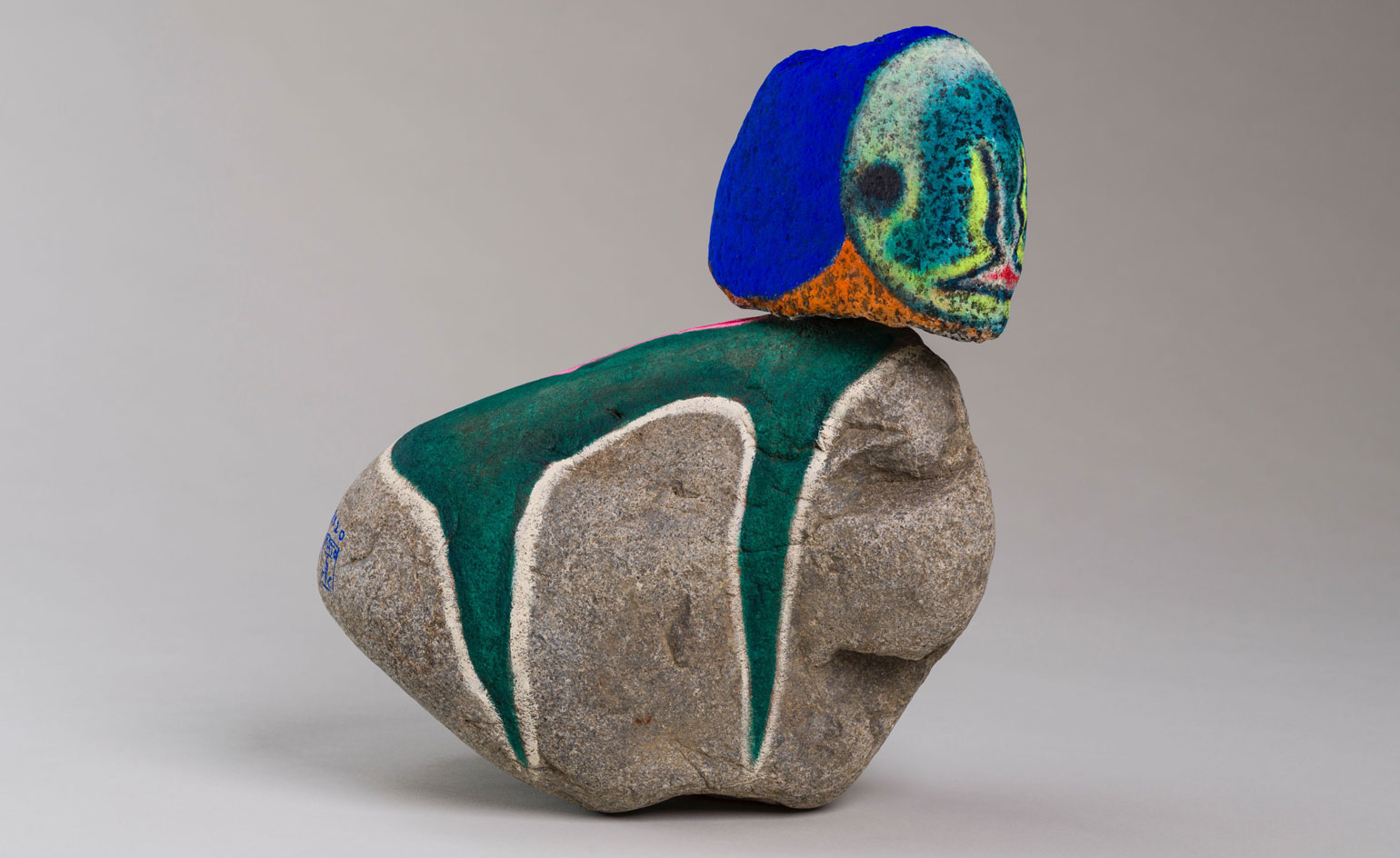
The haunting, mysterious imagery with which the Japanese artist Izumi Kato has made a name for himself is as otherworldly as it is subject to interpretation. Following a successful show at Perrotin gallery in Paris last year, Kato presents a new body of work at the gallery’s New York location this month after a five-year hiatus from the city.
Taking over two floors of the gallery’s historic Lower East Side space, Kato’s latest works range from new mixed-media sculptures and installations to paintings in a variety of scales. The exhibition showcases not only the artist’s significant output in recent years, but also his dexterity across mediums. With works installed in vignettes around the gallery space, either as a cluster of spirits or as stoic, sphinx-like beings, the show culminates in an assemblage of fabric and soft vinyl sculptures that are suspended through the building’s three-storey stairwell.
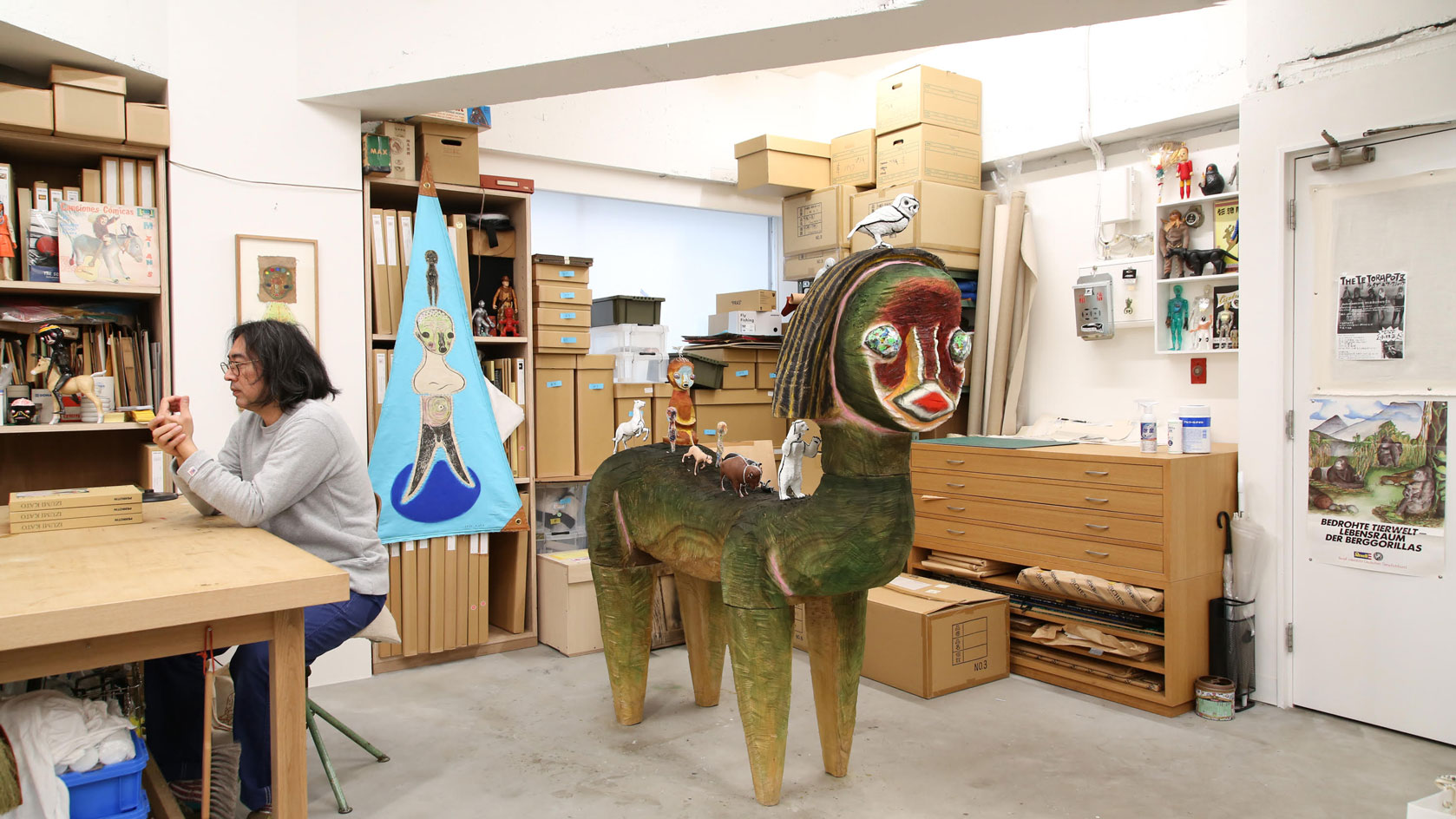
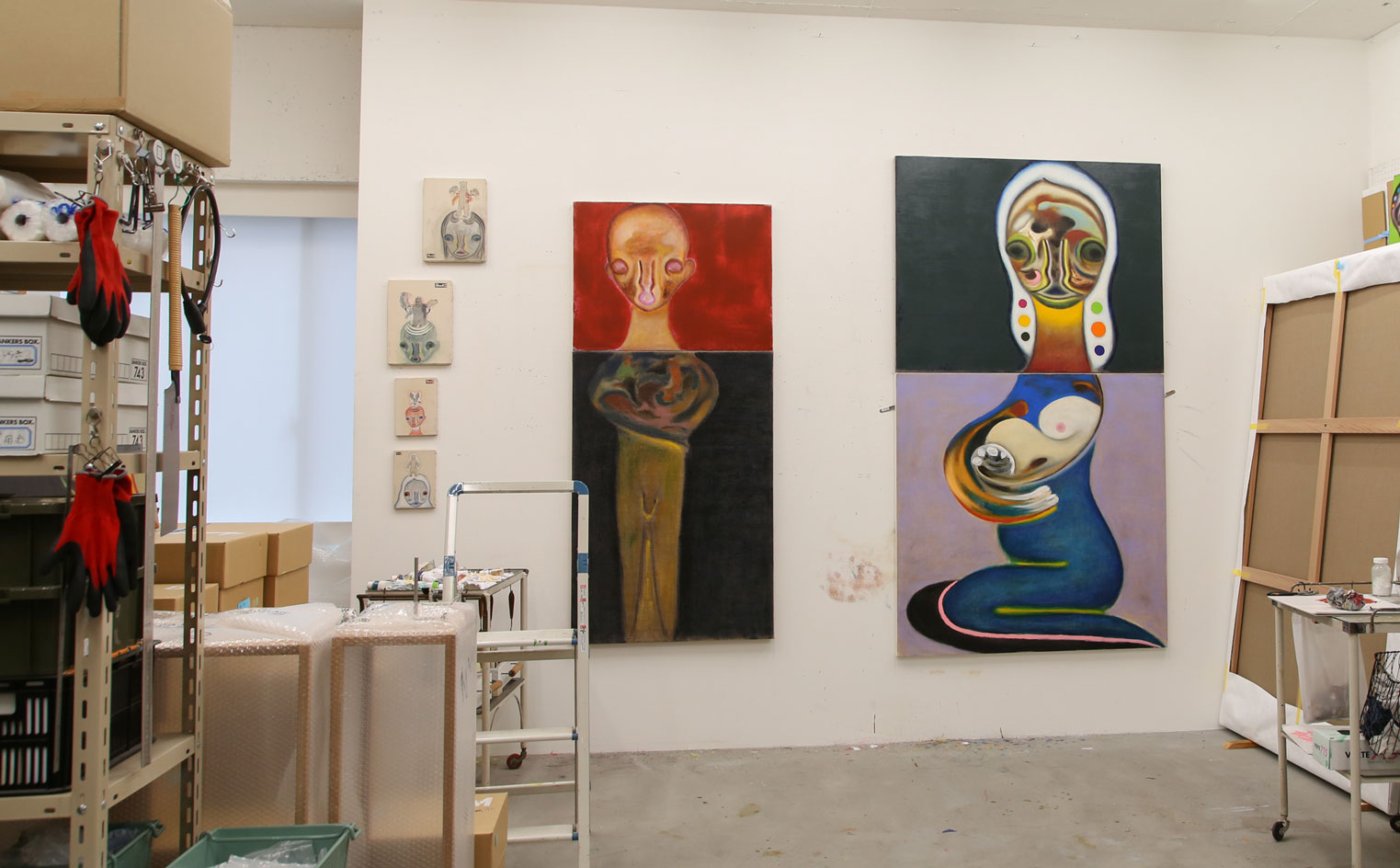
Above and below: inside Izumi Kato’s Tokyo studio with work for his current show at Perrotin New York. © 2021 Izumi Kato. Courtesy of the artist and Perrotin
The self-titled exhibition casts Kato’s ghostly, humanistic figures in an unadulterated fashion. Embryonic in form, and configured with hollow eyes, reduced limbs and bulbous heads, the way each figure is positioned – be it painted on soft textiles or constructed as an arrangement of stones, quietly gazing forward – conveys an omnipotent aura that invites viewers to contemplate another realm. Mirroring the belief in animism as it stems from Shinto tradition, Kato’s paintings and sculptures appear almost as vessels that serve to house spirits from another world. Whether made from solid wood and stone or fashioned from textiles that are then bound in chains and weighted to the floor, these entities hover eerily between two realms.
Kato’s approach to creating is as instinctive as his work indicates. Born in 1969 in Shimane, Japan, the artist generates enigmatic imagery that reflects the confluence of cultural beliefs that he was exposed to growing up. ‘Shintoism, Buddhism, and Animism are all mixed in my hometown. I am influenced by my upbringing, where everything has a life of its own,’ he explains via a translator. ‘I am aware that the human form I paint is not a specific person, but instead, I am using a person's shape to paint. It could be you, and it could be me. I don't know who it is. Using such an anonymous person, I am not focusing on the individual, but on the being itself.’
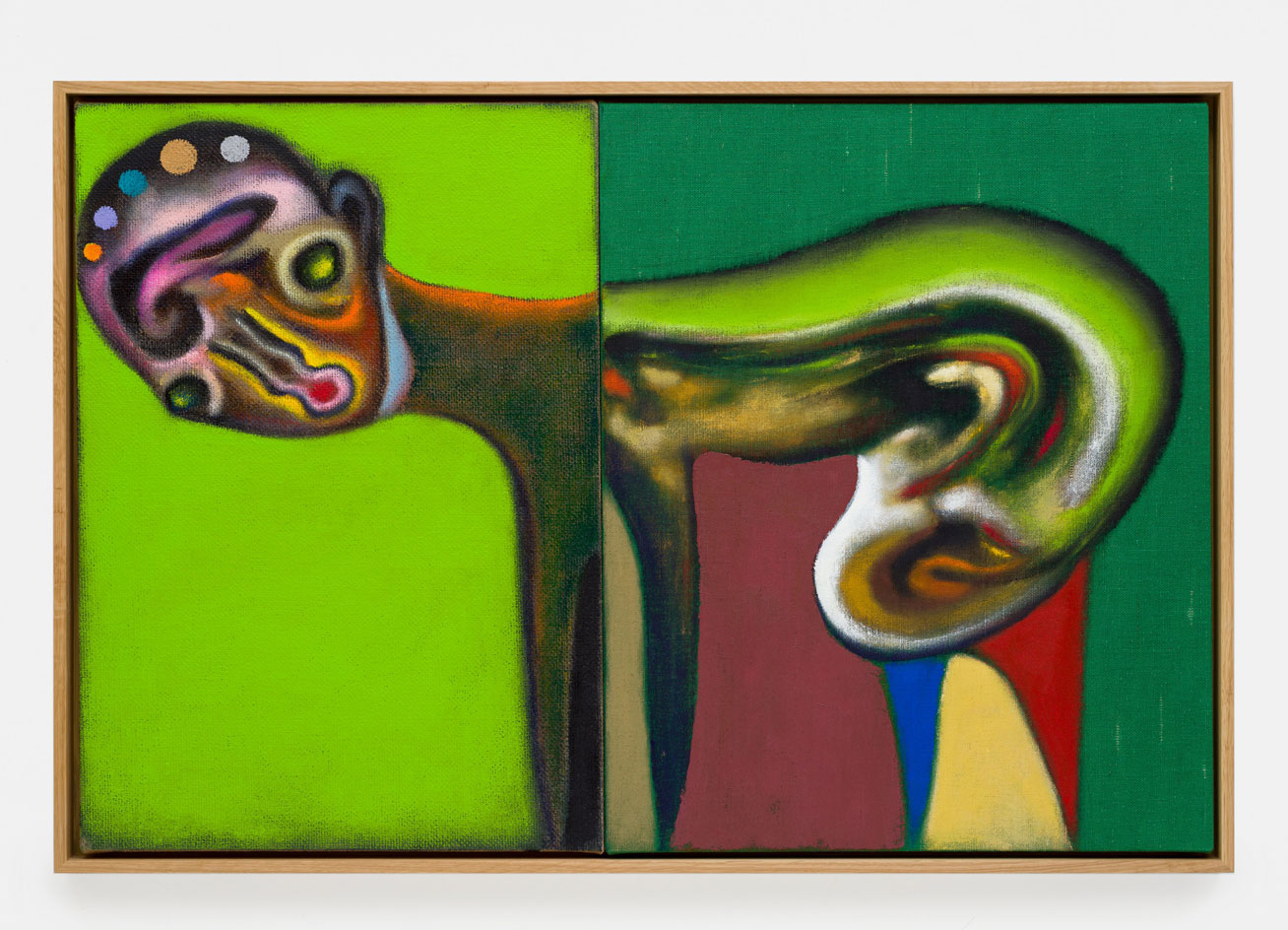
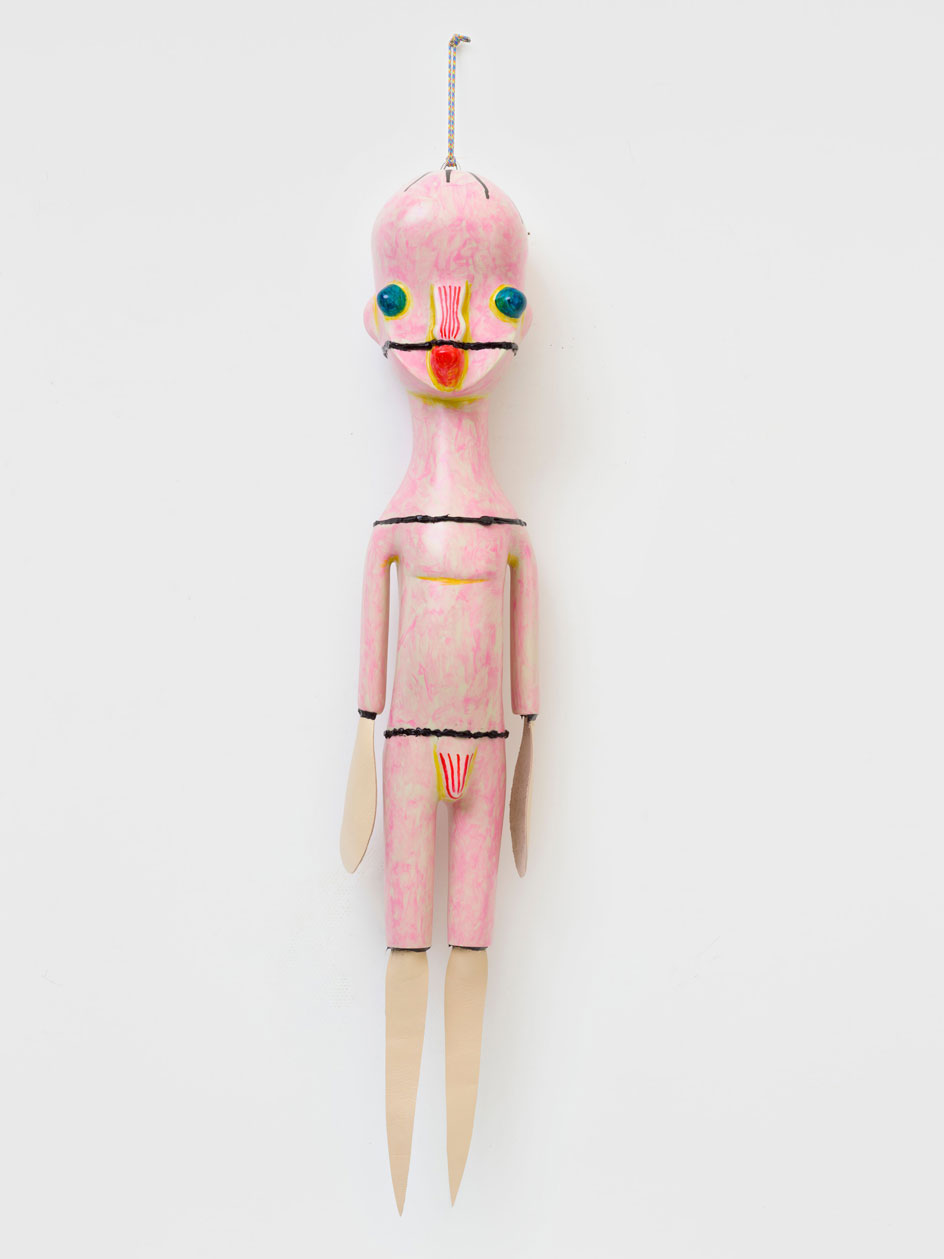
Above: Izumi Kato, Untitled, 2020. Oil on canvas. Below: Izumi Kato, Untitled, 2020, Soft vinyl, leather, silicon, string. © 2020 Izumi Kato. Courtesy the artist & Perrotin
One particularly intriguing aspect of Kato’s work is the way each figure, regardless of medium, has been segmented – often divided into halves and occasionally, more pieces. ‘I personally like the joints of sculptures, whether for wood sculptures or soft vinyl,’ Kato says. ‘I sometimes leave the joints as they are instead of shaping them flat. Intuitively, I thought it would be more interesting to leave the joints as they are, but then I realised that leaving the joints increases the work's creative information. An idea came to my mind if I could use that in my paintings, so I began to create paintings divided into sections.’
For this exhibition, Kato also reveals some new works made using plastic models for the first time. ‘The plastic model works started when I thought I could use the plastic models I had been building as a hobby, while I was locked down during Covid-19,’ he says. ‘There are two patterns: one is a combination of the plastic model itself into a sculpture, and the other is a drawing using the plastic model's blueprint as a collage. It is always exciting to try something new.’
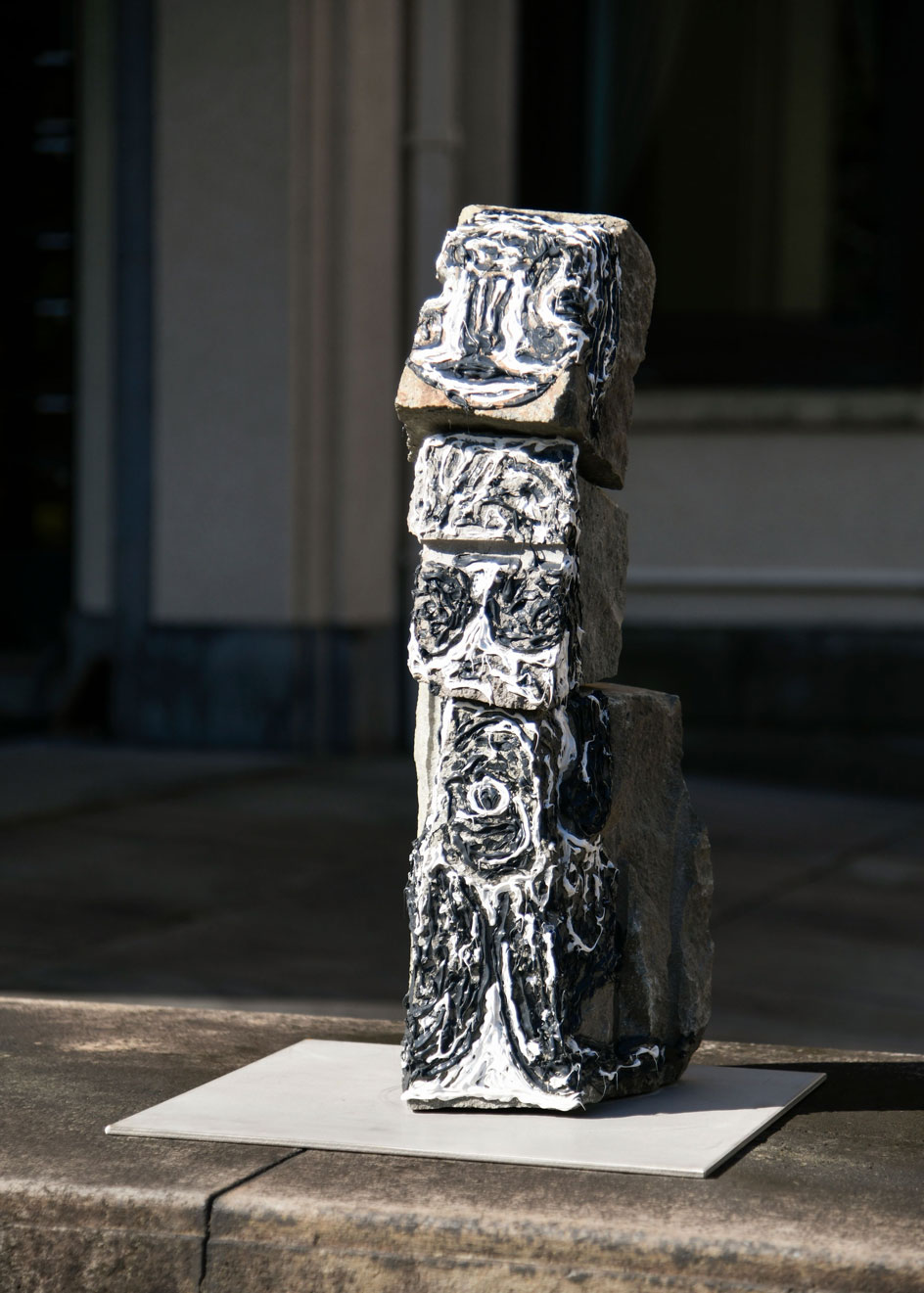
Installation view of ’Garden of Life: Eight Contemporary Artists Venture into Nature’ at Tokyo Metropolitan Teien Art Museum, Japan, 2020. Untitled, 2020 Stone, silicon, stainless steel, pedestal. ©2020 Izumi Kato. Courtesy the artist and Perrotin
Teetering between a sci-fi future and an ancient past, Kato’s creations exude a compelling mysticism, regardless of origin. This is compounded by his agility in moving between painting and sculpture while depicting the same recurring characters in each. Despite bestowing a palpable feeling of otherworldliness, Kato’s practice is rooted firmly in reality.
‘The world is moving at a faster speed than I think. In the last ten years alone, there have been many life-and-death situations, such as the Great East Japan Earthquake and the Covid-19 outbreak,’ he says, having long considered modern history as an influence on his outlook. ‘I think it is essential to be aware of the fact that you are creating works while being in such a real world.’ *

Works on paper in Izumi Kato’s Tokyo studio. © 2021 Izumi Kato. Courtesy of the artist and Perrotin
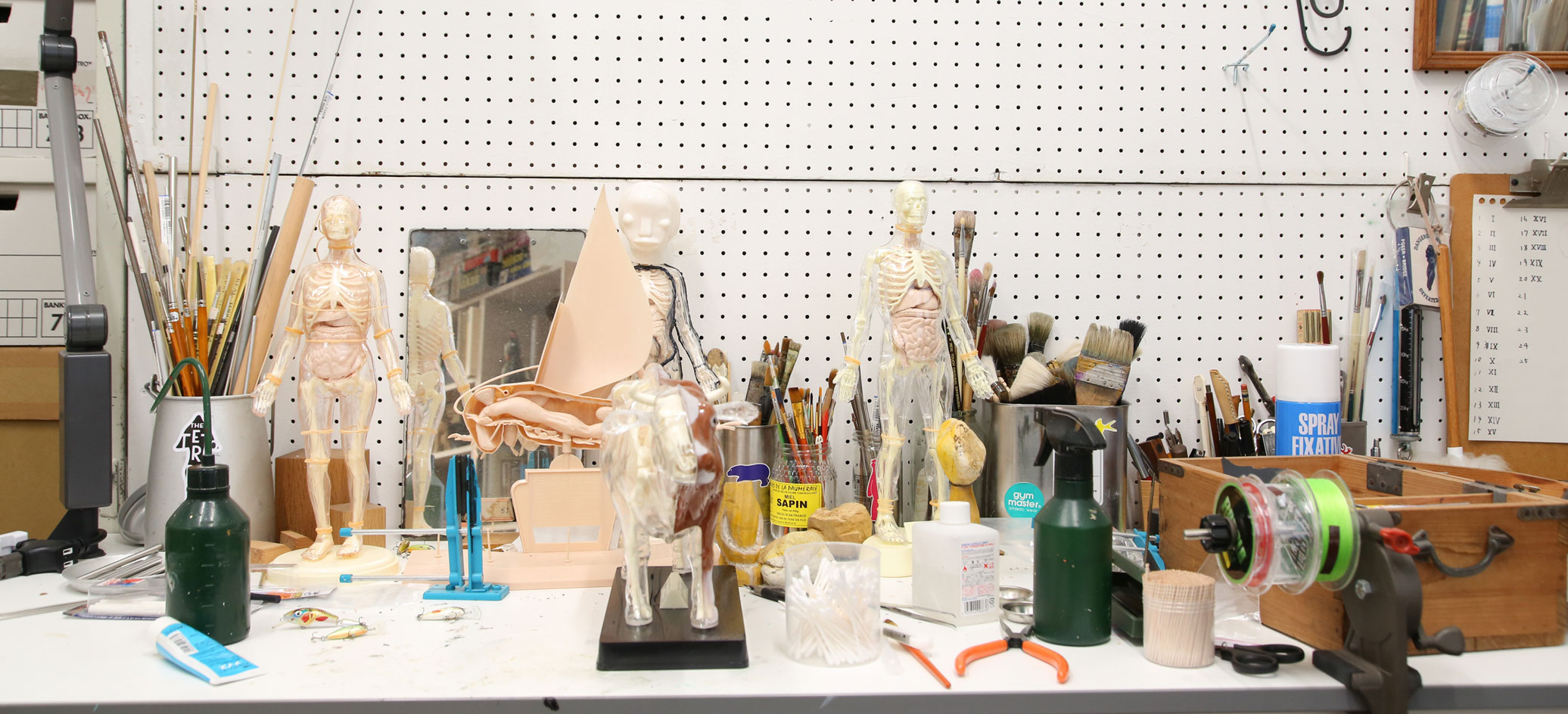
© 2021 Izumi Kato. Courtesy of the artist and Perrotin
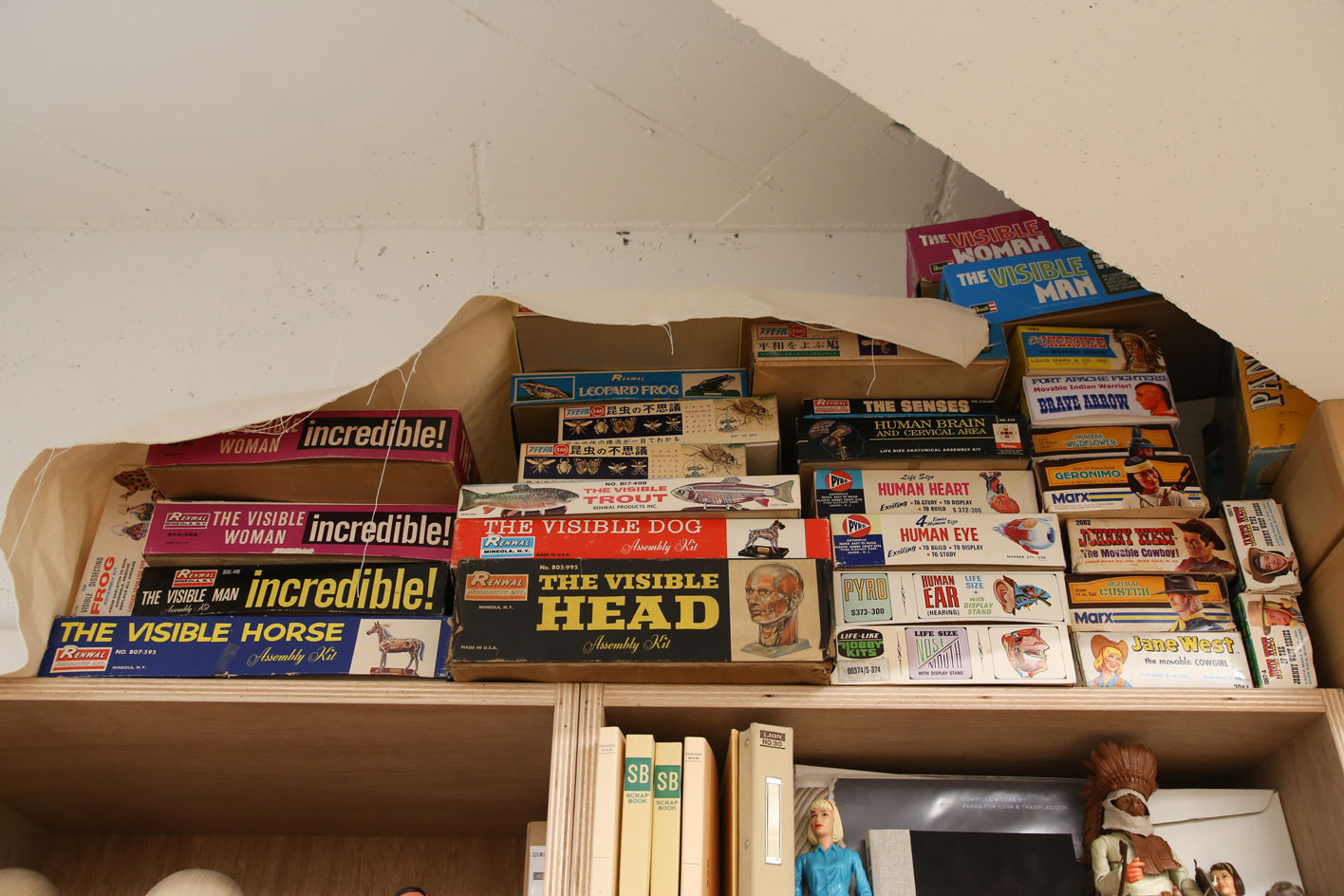
© 2021 Izumi Kato. Courtesy of the artist and Perrotin
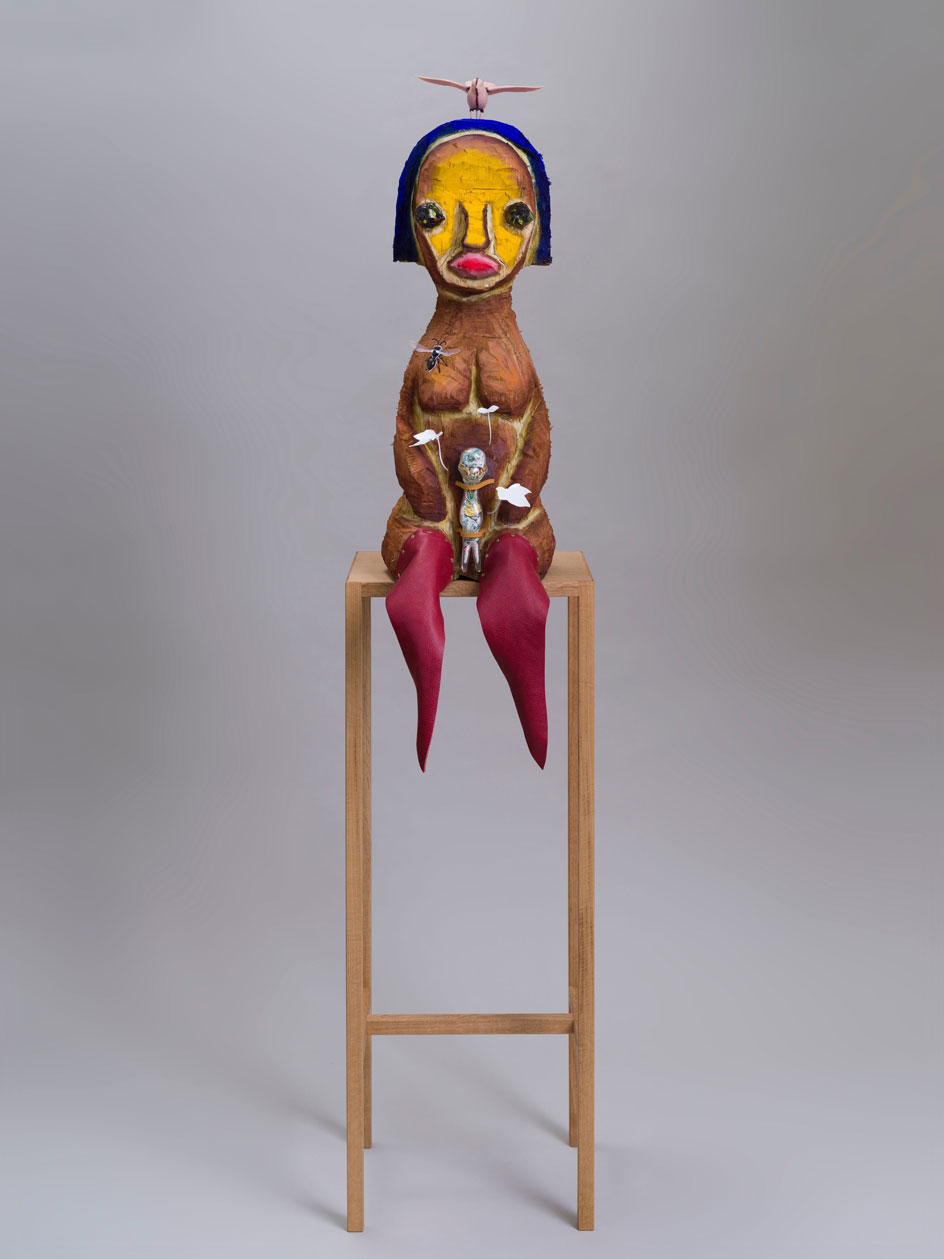
Izumi Kato, Untitled, 2020. © 2020 Izumi Kato. Courtesy the artist & Perrotin.
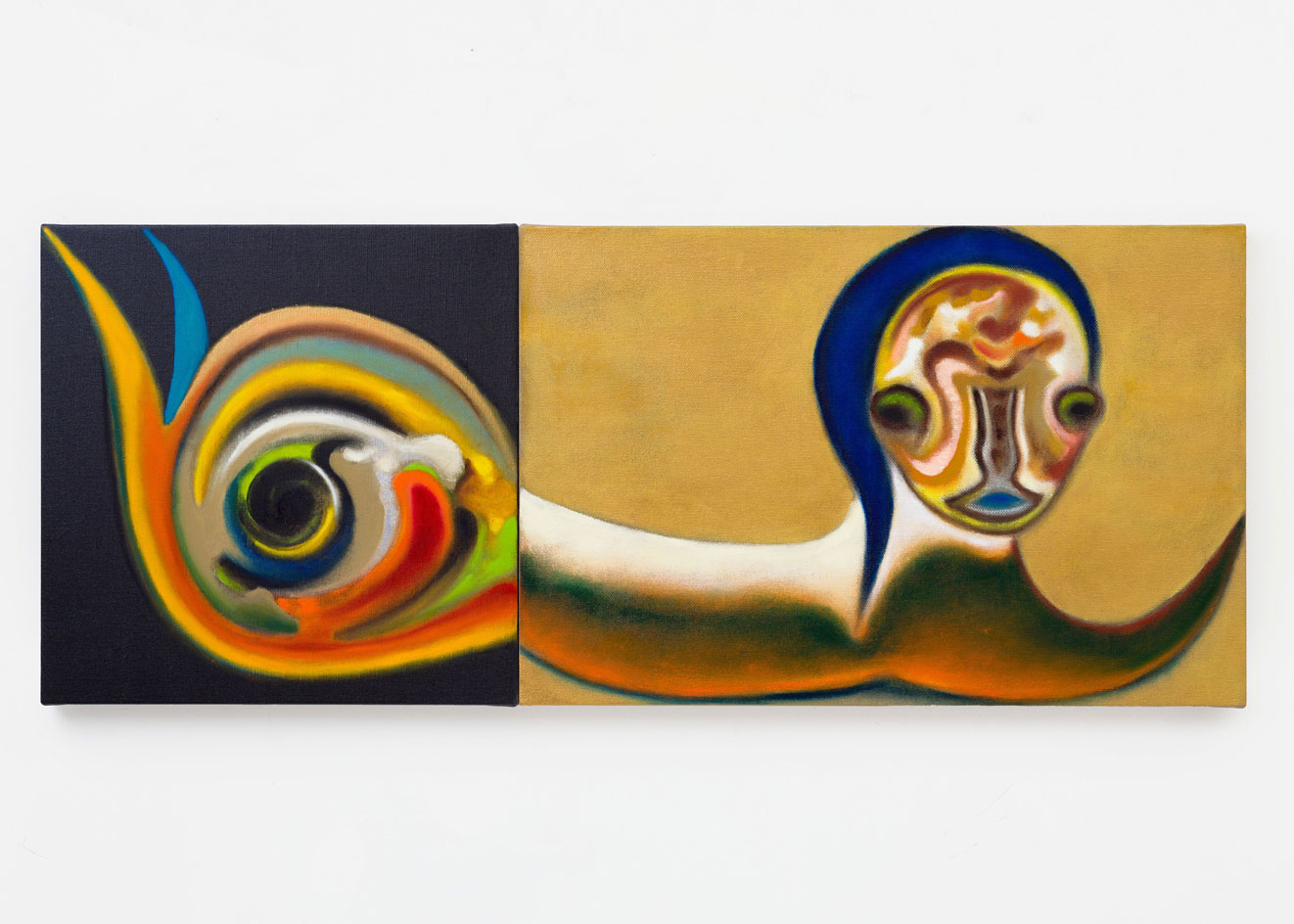
Izumi Kato, Untitled, 2020. ©2020 Izumi Kato. Courtesy the artist & Perrotin.

Izumi Kato, Untitled, 2020, Stone, acrylic, stainless steel. ©2020 Izumi Kato. Courtesy the artist & Perrotin.

Exhibition View of Izumi Kato at Perrotin New York, 2021. © 2020 Izumi Kato. Courtesy the artist & Perrotin
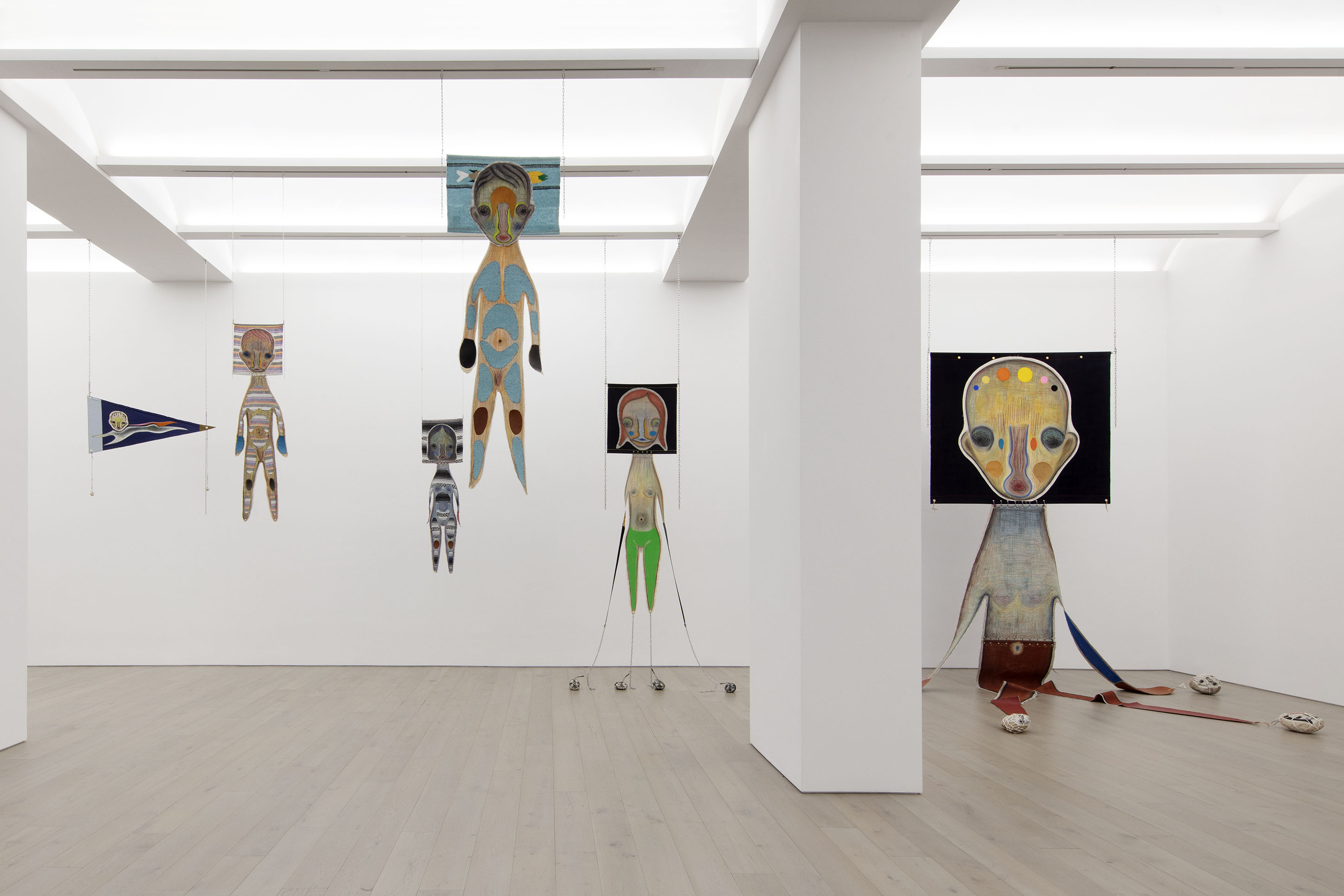
Exhibition View of Izumi Kato at Perrotin New York, 2021. © 2020 Izumi Kato. Courtesy the artist & Perrotin
INFORMATION
Izumi Kato’s exhibition at Perrotin New York will run until 17 April 2021
perrotin.com
ADDRESS
130 Orchard St
New York, NY 10002
Receive our daily digest of inspiration, escapism and design stories from around the world direct to your inbox.
Pei-Ru Keh is a former US Editor at Wallpaper*. Born and raised in Singapore, she has been a New Yorker since 2013. Pei-Ru held various titles at Wallpaper* between 2007 and 2023. She reports on design, tech, art, architecture, fashion, beauty and lifestyle happenings in the United States, both in print and digitally. Pei-Ru took a key role in championing diversity and representation within Wallpaper's content pillars, actively seeking out stories that reflect a wide range of perspectives. She lives in Brooklyn with her husband and two children, and is currently learning how to drive.
-
 A breathtaking exhibition celebrating modernism’s transatlantic ties soars above Manhattan
A breathtaking exhibition celebrating modernism’s transatlantic ties soars above ManhattanCurated by interior designer Andre Mellone, 'Crossed Trajectories' at Galerie Gabriel's penthouse explores connections between nomadic post-war creatives Jean Royère, Roberto Platé and more
-
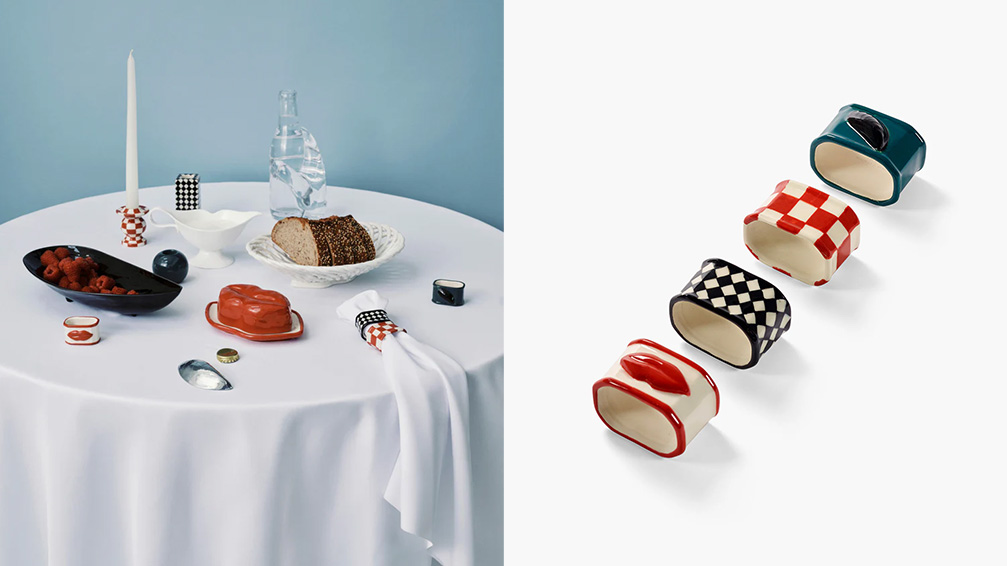 Sculptural, design-led napkin rings for festive tables
Sculptural, design-led napkin rings for festive tablesThe simple napkin ring harbours the potential to bring a stylish punch of personality to any table setting
-
 How Peter Saville came to art direct the best of contemporary culture
How Peter Saville came to art direct the best of contemporary cultureFrom Peter Saville's first steps with Factory Records and legendary album designs to his later work in art and fashion: we chart the history of the British art director
-
 Yuko Mohri’s living installations play on Marcel Duchamp’s surrealism
Yuko Mohri’s living installations play on Marcel Duchamp’s surrealismThe artist’s seven new works on show at Milan’s Pirelli HangarBicocca explore the real and imaginary connections that run through society
-
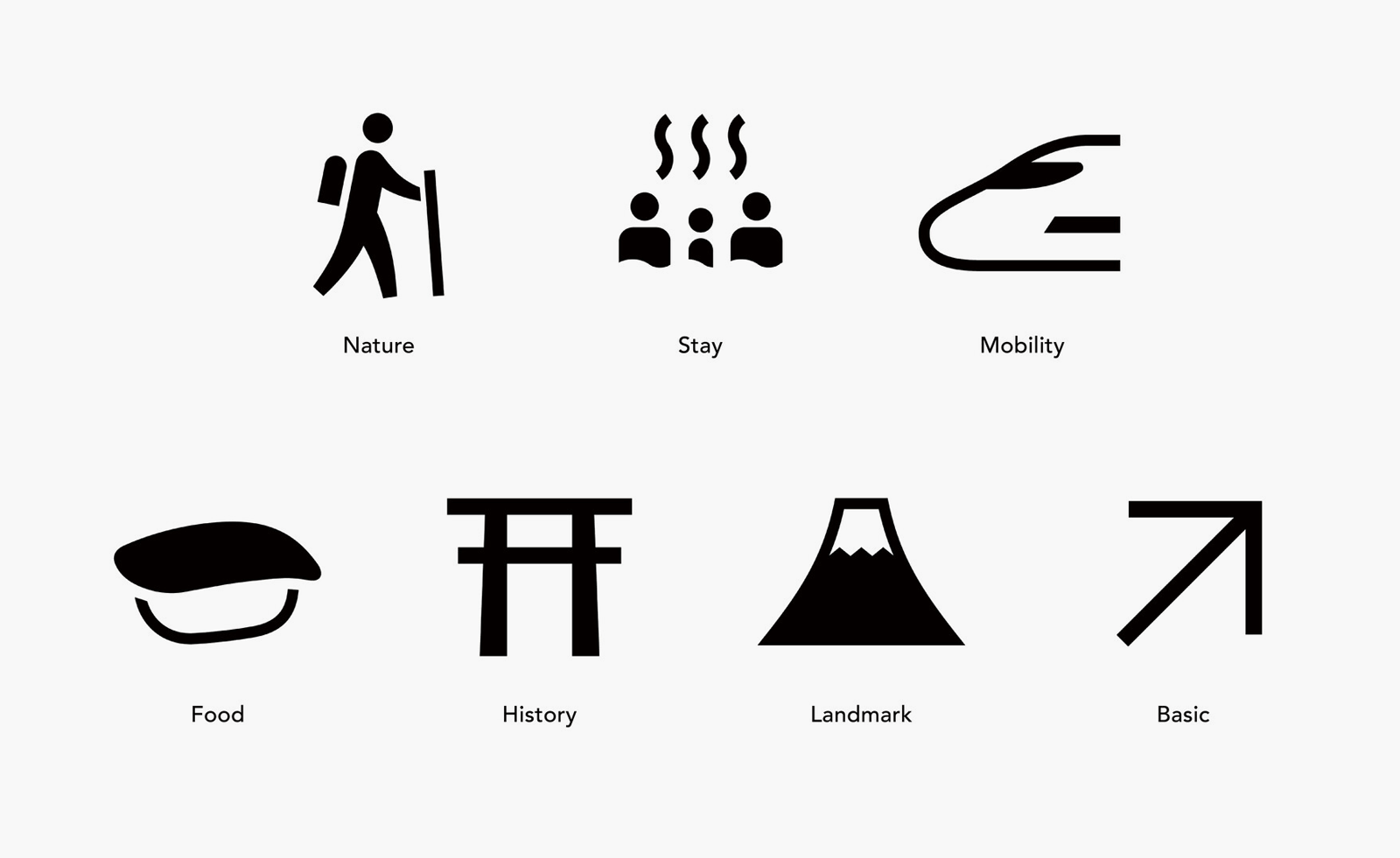 Get the picture? A new exhibition explores the beautiful simplicity of Japanese pictograms
Get the picture? A new exhibition explores the beautiful simplicity of Japanese pictogramsThe simple, minimalist forms of a pictogram are uniquely Japanese, as new exhibition 'Pictograms: Iconic Japanese Designs' illustrates
-
 Rolf Sachs’ largest exhibition to date, ‘Be-rühren’, is a playful study of touch
Rolf Sachs’ largest exhibition to date, ‘Be-rühren’, is a playful study of touchA collection of over 150 of Rolf Sachs’ works speaks to his preoccupation with transforming everyday objects to create art that is sensory – both emotionally and physically
-
 Architect Erin Besler is reframing the American tradition of barn raising
Architect Erin Besler is reframing the American tradition of barn raisingAt Art Omi sculpture and architecture park, NY, Besler turns barn raising into an inclusive project that challenges conventional notions of architecture
-
 What is recycling good for, asks Mika Rottenberg at Hauser & Wirth Menorca
What is recycling good for, asks Mika Rottenberg at Hauser & Wirth MenorcaUS-based artist Mika Rottenberg rethinks the possibilities of rubbish in a colourful exhibition, spanning films, drawings and eerily anthropomorphic lamps
-
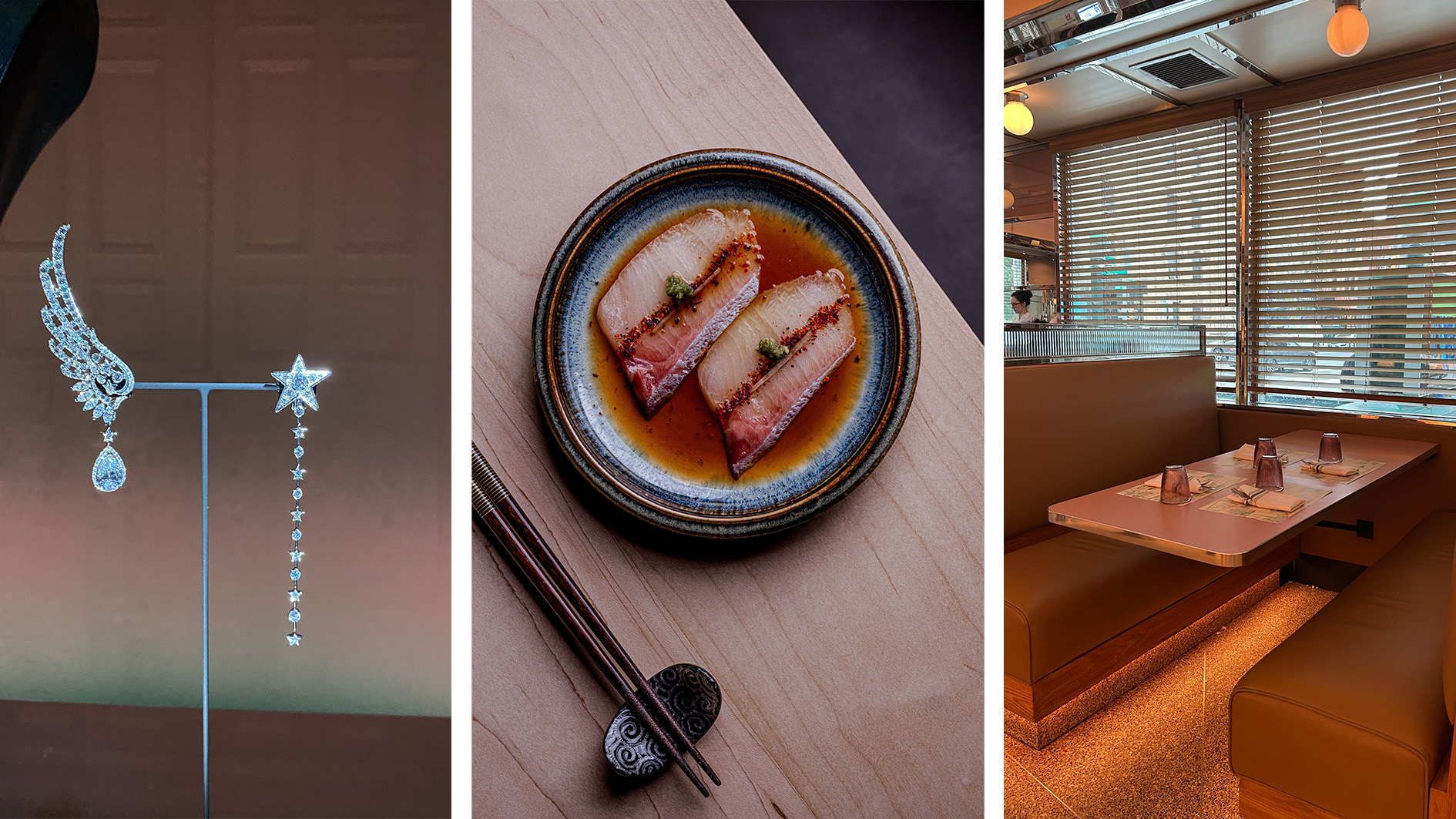 Out of office: the Wallpaper* editors’ picks of the week
Out of office: the Wallpaper* editors’ picks of the weekIt was a jam-packed week for the Wallpaper* staff, entailing furniture, tech and music launches and lots of good food – from afternoon tea to omakase
-
 San Francisco’s controversial monument, the Vaillancourt Fountain, could be facing demolition
San Francisco’s controversial monument, the Vaillancourt Fountain, could be facing demolitionThe brutalist fountain is conspicuously absent from renders showing a redeveloped Embarcadero Plaza and people are unhappy about it, including the structure’s 95-year-old designer
-
 See the fruits of Niki de Saint Phalle and Jean Tinguely's creative and romantic union at Hauser & Wirth Somerset
See the fruits of Niki de Saint Phalle and Jean Tinguely's creative and romantic union at Hauser & Wirth SomersetAn intimate exhibition at Hauser & Wirth Somerset explores three decades of a creative partnership